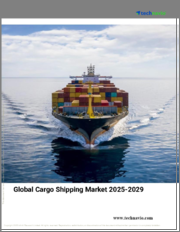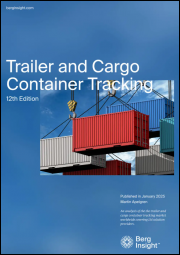
|
시장보고서
상품코드
1518514
패널 밴 시장 규모 : 추진별, 톤수별, 최종 용도별, 예측(2024-2032년)Panel Vans Market Size - By Propulsion (ICE, Electric), By Tonnage Capacity (Below 2 Tons, 2 to 3 Tons, Above 3 Tons), By End Use (Freight Delivery, Utility Services, Construction & Mining) & Forecast, 2024 - 2032 |
||||||
세계의 패널 밴 시장 규모는 2024-2032년 CAGR 6%로 추이하며, 차량 효율의 혁신과 커넥티비티의 진화에 의해 촉진됩니다.
이러한 기능 강화는 사업을 확장하고 도시 물류 및 마지막 1마일 배송을 위한 민첩하고 비용 효율적인 운송 솔루션을 원하는 중소기업에 대응하기 위한 것입니다. 기술 통합으로 차량 관리와 운영 효율성이 향상됨에 따라 패널 밴은 도시 환경을 탐색하는 기업의 진화하는 요구를 충족시키는 범용성과 신뢰성으로 점점 더 많은 지지를 받고 있으며, 이는 세계 시장 확대에 박차를 가하고 있습니다.
예를 들어 DFSK는 2024년 5월, 다양한 비즈니스 요구에 대응하기 위해 현지에 도입된 소규모 사업자를 위한 새로운 경트럭과 패널 밴을 출시했습니다. DFSK의 지역 밀착형 접근 방식은 소규모 사업자를 위한 맞춤형 솔루션에 대한 추세를 강조하고, 세계 패널 밴 및 트럭 부문의 경쟁력을 강화하고 혁신을 촉진하기 위한 DFSK의 노력의 일환으로, 다양한 비즈니스 요구 사항을 충족하고 다용도하고 효율적인 상용차에 대한 수요를 충족시키는 데 중점을 두고 있습니다. 시장 역학에 영향을 미칠 수 있으며, 세계 패널밴 부문의 경쟁을 강화하고 혁신을 촉진할 수 있습니다.
전기 추진 부문은 2032년까지 주목할 만한 시장 점유율을 차지할 것입니다. 전기 패널 밴은 무공해 운전, 운영 비용 절감, 정부 혜택으로 인해 도시 지역의 물류 및 배송 서비스에 매력적으로 작용하고 있습니다. 전 세계에서 기업과 정부가 친환경 운송 솔루션을 우선시하는 가운데 전기 추진 부문은 빠르게 성장하고 있으며, 효율적이고 친환경적인 패널 밴에 대한 수요 증가에 대응하기 위해 배터리 기술 및 충전 인프라의 혁신을 주도하고 있습니다.
건설 및 광업 분야는 2032년까지 장비 및 자재에 대한 안정적인 운송 수요로 인해 상당한 성장세를 보일 것으로 예상됩니다. 패널 밴은 다용도한 적재 공간, 내구성 및 접근성을 제공하여 이러한 산업의 특수한 요구를 충족시킬 수 있습니다. 전 세계에서 인프라 프로젝트와 광산 사업이 확대됨에 따라 효율적인 물류 솔루션에 대한 요구가 증가하고 있습니다. 이 부문의 우위는 건설 및 광산 활동을 지원하는 데 있으며, 매우 중요한 역할을 하고 있으며, 차량 맞춤화 및 차량 관리 기술의 혁신을 주도하고 있습니다.
북미 패널 밴 시장 점유율은 물류, 배송 서비스 및 레저용 차량 부문의 강력한 수요로 인해 2032년까지 상당한 CAGR을 나타낼 것으로 예상됩니다. 이 지역에서는 다양한 상업적 요구와 소비자 니즈에 부합하는 다용도하고 넓은 차량에 대한 선호도가 높습니다. 인프라 개선과 E-Commerce 활성화 등의 요인도 시장 성장을 더욱 촉진하고 있습니다. 효율성과 기능성을 중시하는 북미는 패널 밴 산업의 중심지로 부상하여 운송 산업에서 기술 혁신과 채택을 촉진할 것으로 보입니다.
목차
제1장 조사 방법과 조사 범위
제2장 개요
제3장 업계 인사이트
- 에코시스템 분석
- 공급업체 상황
- 원재료 공급업체
- 자동차 부품 제조업체
- 자동차 제조업체(OEM)
- 기술 프로바이더
- 딜러/유통업체
- 최종사용자
- 이익률 분석
- 기술과 혁신 전망
- 특허 분석
- 주요 뉴스 & 구상
- 규제 상황
- 영향요인
- 촉진요인
- E-Commerce의 확대가 라스트 마일 딜리버리의 수요를 촉진
- 도시화에 의한 효율적인 상품 운송의 요구 증가
- 소규모 기업의 증가에 의한 플릿 차량의 수요 증가
- 차량 효율성과 안전성을 높이는 기술의 진보
- 업계의 잠재적 리스크 & 과제
- 연료 가격 상승에 의한 사업 운영비용의 증가
- 자동차 배출 기준 및 관세에 영향을 미치는 규제 변경
- 촉진요인
- 성장 가능성 분석
- Porter의 산업 분석
- PESTEL 분석
제4장 경쟁 구도
- 서론
- 기업 점유율 분석
- 경쟁 포지셔닝 매트릭스
- 전략 전망 매트릭스
제5장 시장 추산·예측 : 추진별, 2021-2032년
- 주요 동향
- ICE
- 가솔린
- 디젤
- 가솔린
- 전기
- HEV
- BEV
- 기타
제6장 시장 추산·예측 : 톤수별, 2021-2032년
- 주요 동향
- 2톤 미만
- 2-3톤
- 3톤 이상
제7장 시장 추산·예측 : 최종 용도별, 2021-2032년
- 주요 동향
- 화물 운송
- ICE
- 전기
- 유틸리티 서비스
- ICE
- 전기
- 건설·광업
- ICE
- 전기
- 기타
- ICE
- 전기
제8장 시장 추산·예측 : 지역별, 2021-2032년
- 주요 동향
- 북미
- 미국
- 캐나다
- 유럽
- 영국
- 독일
- 프랑스
- 이탈리아
- 러시아
- 스페인
- 기타 유럽
- 아시아태평양
- 중국
- 일본
- 인도
- 한국
- 호주
- 동남아시아
- 기타 아시아태평양
- 라틴아메리카
- 브라질
- 멕시코
- 아르헨티나
- 기타 라틴아메리카
- 중동 및 아프리카
- UAE
- 남아프리카공화국
- 사우디아라비아
- 기타 중동 및 아프리카
제9장 기업 개요
- Citroën
- Fiat
- Fiat Professional
- Ford
- Hyundai
- Isuzu
- Iveco
- Kia
- LDV
- MAN
- Mercedes-Benz
- Mitsubishi
- Nissan
- Opel
- Peugeot
- Ram Trucks
- Renault
- Toyota
- Vauxhall
- Volkswagen
Global Panel Vans Market size will accumulate at a 6% CAGR between 2024 and 2032, propelled by innovations in vehicle efficiency coupled with advancements in connectivity. These enhancements cater to small businesses expanding their operations and seeking agile and cost-effective transportation solutions for urban logistics and last-mile delivery. As technological integration improves fleet management and operational efficiency, panel vans are increasingly favored for their versatility and reliability in meeting the evolving needs of businesses navigating urban landscapes, fueling market expansion globally.
For instance, in May 2024, DFSK launched a new mini truck and panel van aimed at small business owners, introduced locally to cater to diverse operational needs. This development indicates a focus on meeting diverse operational requirements and catering to the growing demand for versatile and efficient commercial vehicles. DFSK's localized approach underscores a trend towards tailored solutions for small businesses, potentially influencing market dynamics by enhancing competition and encouraging innovation in the panel vans segment globally.
The panel vans industry is classified based on product, application, end-use, and region.
The electric propulsion segment will garner noteworthy market share by 2032, driven by increasing emphasis on sustainability and stringent emissions regulations. Electric panel vans offer zero-emission operation, lower operating costs, and government incentives, making them attractive for urban logistics and delivery services. As businesses and governments globally prioritize eco-friendly transportation solutions, the electric propulsion segment will expand rapidly, leading innovation in battery technology and charging infrastructure to meet the growing demand for efficient and environmentally friendly panel vans.
The construction and mining segment will gain a considerable foothold by 2032, attributed to the demand for reliable transportation of equipment and materials. Panel vans offer versatile cargo space, durability, and accessibility, catering to the specialized needs of these industries. As infrastructure projects and mining operations expand globally, the requirement for efficient logistics solutions grows. This segment's dominance underscores its pivotal role in supporting construction and mining activities, driving innovation in vehicle customization and fleet management technologies.
North America panel vans market share will register a substantial CAGR through 2032, owing to robust demand from logistics, delivery services, and recreational vehicle sectors. The region's preference for versatile, spacious vehicles aligns with diverse commercial and consumer needs. Factors such as infrastructure development and increasing e-commerce activities further bolster market growth. With a strong emphasis on efficiency and functionality, North America will emerge as a central contributor to the panel vans industry, driving innovation and adoption in the transportation industry.
Table of Contents
Chapter 1 Methodology & Scope
- 1.1 Research design
- 1.1.1 Research approach
- 1.1.2 Data collection methods
- 1.2 Base estimates and calculations
- 1.2.1 Base year calculation
- 1.2.2 Key trends for market estimates
- 1.3 Forecast model
- 1.4 Primary research & validation
- 1.4.1 Primary sources
- 1.4.2 Data mining sources
- 1.5 Market definitions
Chapter 2 Executive Summary
- 2.1 Industry 360 degree synopsis, 2021 - 2032
Chapter 3 Industry Insights
- 3.1 Industry ecosystem analysis
- 3.2 Supplier landscape
- 3.2.1 Raw material suppliers
- 3.2.2 Automotive parts manufacturer
- 3.2.3 Automakers/Manufacturers (OEMs)
- 3.2.4 Technology providers
- 3.2.5 Dealers/Distributors
- 3.2.6 End-users
- 3.3 Profit margin analysis
- 3.4 Technology & innovation landscape
- 3.5 Patent analysis
- 3.6 Key news & initiatives
- 3.7 Regulatory landscape
- 3.8 Impact forces
- 3.8.1 Growth drivers
- 3.8.1.1 E-commerce expansion driving last-mile delivery demand
- 3.8.1.2 Urbanization increasing the need for efficient goods transportation
- 3.8.1.3 Rise of small businesses boosting demand for fleet vehicles
- 3.8.1.4 Technological advancements enhancing vehicle efficiency and safety
- 3.8.2 Industry pitfalls & challenges
- 3.8.2.1 Rising fuel prices increasing operational costs for businesses
- 3.8.2.2 Regulatory changes affecting vehicle emission standards and tariffs
- 3.8.1 Growth drivers
- 3.9 Growth potential analysis
- 3.10 Porter's analysis
- 3.11 PESTEL analysis
Chapter 4 Competitive Landscape, 2023
- 4.1 Introduction
- 4.2 Company market share analysis
- 4.3 Competitive positioning matrix
- 4.4 Strategic outlook matrix
Chapter 5 Market Estimates & Forecast, By Propulsion 2021 - 2032 ($Bn, Units)
- 5.1 Key trends
- 5.2 ICE
- 5.2.1 Petrol
- 5.2.2 Diesel
- 5.2.3 CNG
- 5.3 Electric
- 5.3.1 HEV
- 5.3.2 BEV
- 5.3.3 Others
Chapter 6 Market Estimates & Forecast, By Tonnage Capacity, 2021 - 2032 ($Bn, Units)
- 6.1 Key trends
- 6.2 Below 2 tons
- 6.3. 2 to 3 tons
- 6.4 Above 3 tons
Chapter 7 Market Estimates & Forecast, By End Use, 2021 - 2032 ($Bn, Units)
- 7.1 Key trends
- 7.2 Freight delivery
- 7.2.1 ICE
- 7.2.2 Electric
- 7.3 Utility services
- 7.3.1 ICE
- 7.3.2 Electric
- 7.4 Construction & mining
- 7.4.1 ICE
- 7.4.2 Electric
- 7.5 Others
- 7.5.1 ICE
- 7.5.2 Electric
Chapter 8 Market Estimates & Forecast, By Region, 2021 - 2032 ($Mn, Units)
- 8.1 Key trends
- 8.2 North America
- 8.2.1 U.S.
- 8.2.2 Canada
- 8.3 Europe
- 8.3.1 UK
- 8.3.2 Germany
- 8.3.3 France
- 8.3.4 Italy
- 8.3.5 Russia
- 8.3.6 Spain
- 8.3.7 Rest of Europe
- 8.4 Asia Pacific
- 8.4.1 China
- 8.4.2 Japan
- 8.4.3 India
- 8.4.4 South Korea
- 8.4.5 Australia
- 8.4.6 Southeast Asia
- 8.4.7 Rest of Asia Pacific
- 8.5 Latin America
- 8.5.1 Brazil
- 8.5.2 Mexico
- 8.5.3 Argentina
- 8.5.4 Rest of Latin America
- 8.6 MEA
- 8.6.1 UAE
- 8.6.2 South Africa
- 8.6.3 Saudi Arabia
- 8.6.4 Rest of MEA
Chapter 9 Company Profiles
- 9.1 Citroën
- 9.2 Fiat
- 9.3 Fiat Professional
- 9.4 Ford
- 9.5 Hyundai
- 9.6 Isuzu
- 9.7 Iveco
- 9.8 Kia
- 9.9 LDV
- 9.10 MAN
- 9.11 Mercedes-Benz
- 9.12 Mitsubishi
- 9.13 Nissan
- 9.14 Opel
- 9.15 Peugeot
- 9.16 Ram Trucks
- 9.17 Renault
- 9.18 Toyota
- 9.19 Vauxhall
- 9.20 Volkswagen



















